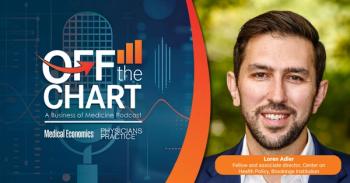
Mark Cuban’s direct-to-consumer online pharmacy makes insurance look unnecessary
Key Takeaways
- DTC pharmacy models offer lower overall costs by eliminating pharmacy benefit managers, despite higher out-of-pocket expenses for patients.
- Insured patients face higher total costs due to premiums and insurer payments, overshadowing the benefits of lower copays.
Ohio State researchers say the billionaire entrepreneur’s Cost Plus Drug Company exposes how insurance premiums and middlemen drive up the true cost of neurologic medications.
A new analysis by researchers at
The study, published August 19 in
The Cost Plus Drug Company,
The study found that, while DTC pharmacy users paid an average of 75% more out of pocket, the total annual costs were 413% lower than those of insured patients filling prescriptions at commercial pharmacies.
“The difference was close to zero for a lot of these different medications,” said first author Amanda Gusovsky Chevalier, Ph.D., M.P.H., assistant professor in the division of general internal medicine at Ohio State’s College of Medicine.
“The reason that’s notable is because this price that patients can get directly from a website is the same as the cost to patients who, on top of buying medications, are paying a premium for an insurance plan that’s probably coming out of their paycheck,” Gusovsky Chevalier said. “So the cost you’re paying that is subsidized by your insurance provider is the same as what you could pay at the Mark Cuban pharmacy. This could be a great option for uninsured patients who are paying completely out of pocket.”
A closer look at the math
Researchers analyzed neurologic drugs used to treat conditions like Alzheimer’s disease, multiple sclerosis (MS), peripheral neuropathy, Parkinson’s disease and myasthenia gravis. They compared 2024 DTC prices to model-estimated insurance costs derived from a decade of commercial claims data.
The findings showed that, while insured patients benefit from lower copays, the system’s broader costs — including premiums and insurer payments — drive total spending sharply higher.
In contrast, the DTC model’s transparent pricing structure, which cuts out pharmacy benefit managers, resulted in significantly lower overall costs.
MS drugs teriflunomide and droxidopa were among the medications with lower out-of-pocket costs on the Cost Plus platform — 40% and 18% lower, respectively. The biggest systemic savings appeared in total costs: teriflunomide (-5622%), droxidopa (-4777%) and dimethyl fumarate (-1894%).
If every commercial prescription were filled through a DTC pharmacy, the study estimated aggregate out-of-pocket expenditures would rise by $82 million — but total U.S. drug spending could drop by roughly $9 million.
Market limits — and opportunities
Still, researchers cautioned that DTC pharmacies currently cover a narrow slice of the market. At the time of the analysis, Cost Plus listed only 33 of 79 neurologic medications — about 42% of those available commercially.
That limited formulary could complicate care for patients using both DTC and traditional pharmacies. Fragmented medication records may create safety risks and complicate coordination between prescribers and pharmacists.
The authors concluded that there are real benefits, especially for uninsured patients. They also advise caution for patients who work both sides of the system to pay the lowest prices, as they risk having fragmented prescription records that could lead to unintended drug interactions.
What this means for physicians
For physicians, the study serves as both a new resource and a policy question.
Online pharmacies like Cost Plus may offer patients without coverage a way to access essential medications at competitive rates, but they also expose inefficiencies in the private insurance model, where administrative costs and negotiated markups often overshadow direct drug prices.
As Gusovsky Chevalier and colleagues note, these findings come against the backdrop of rapidly rising neurologic drug costs.
In a related study published earlier this year in
The bigger picture
The results point to a system increasingly out of sync with patient affordability.
“Our research has shown that the costs of medications just continue to rise through insurance plans, and it’s really important to find ways for patients to access medicines,” Gusovsky Chevalier said. “I think this adds to a larger body of evidence showing that these direct-to-consumer pharmacies have the potential to disrupt the market in some significant way in the future.”
That said, disruption alone won’t fix the problem. Unless insurers respond by reducing premiums or simplifying pricing structures, insured patients may still pay more overall — even if the sticker price looks lower.
For now, Cost Plus and similar platforms may serve as a practical tool for uninsured patients, a bargaining chip for physicians advocating on behalf of cost-burdened patients, and a wake-up call to a system where the “insured” sometimes pay the higher price.
Newsletter
Stay informed and empowered with Medical Economics enewsletter, delivering expert insights, financial strategies, practice management tips and technology trends — tailored for today’s physicians.

















